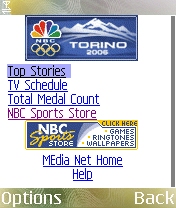 I’ve wanted a Bluetooth GPS device for a long time now. I know it’s a totally geeky thing, but there are so many things that I’ve wanted to do that involve getting a hard lat/long reading. Don’t get me wrong, cel tower information is nice, but nothing is better than knowing *exactly* where you are.
I’ve wanted a Bluetooth GPS device for a long time now. I know it’s a totally geeky thing, but there are so many things that I’ve wanted to do that involve getting a hard lat/long reading. Don’t get me wrong, cel tower information is nice, but nothing is better than knowing *exactly* where you are.
I decided to spend some tax return money on a nice (but inexpensive) Bluetooth GPS unit. Jim Ley was kind enough to share what he knew about them with me in #mobitopia. After talking to Jim and examining my options, it sounded like I had to choose between feature sets in my price range. I could either have the SiRF III chipset, which by all accounts rocks, is small, low power, and extremely accurate, or I could do on-device logging.
My decision quickly came down to either the DeLorme Bluelogger with on-device logging but a previous generation SiRFStar IIe chipset or the Holux GPSlim 236 which has the newer chip but no on-device logging.
I ended up snagging a Holux 236 and a USB data cable for a little over a hundred bucks after shipping on ebay. I’ve since been tinkering with hooking up the GPS to both Meaning and ZoneTag to geocode my flickr photos. They’re the ones filed under geotagged. I’ve also been having fun with the NMEA info python app, Christopher Schmidt’s GPSDisplay, Microsoft Streets and Trips on my wife’s PDA, and GPSDrive on the Nokia 770.
Now that I’ve had a chance to use it a little, it would be nice to be able to do on-device logging. It’s not the end of the world but in hindsight it would have been nice to log my path on the device and download it later rather than haiving to keep a bluetooth connection open on a second device. I’m still glad to have the latest and greatest chipset though.
The Holux 236 has been one of the most hassle-free bluetooth devices I’ve used. It doesn’t require explicit pairing before use and getting it to work with various platforms and applications has been a breeze. I do have some trouble getting a fix to transfer from time to time, but it’s extremely well behaved by Bluetooth device standards.
I hope to play around with this some more but also do some real stuff with it too. I can’t wait to poke at it from within Python for S60 and an open street map of Lawrence would rule. Speaking of Lawrence, you should definitely check out where Tim Hibbard is. He’s been geolocating himself around town with a nice Google Maps interface for some time now.











